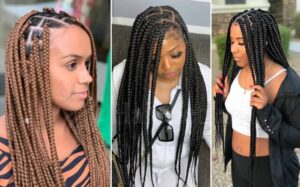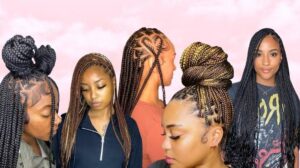If you have a sensitive scalp but love wearing braids year-round, you’re probably familiar with the discomfort that can come with it, especially during colder months. The dryness of winter combined with synthetic hair fibers can lead to irritation, flakiness, and even worsening symptoms for those with scalp conditions like psoriasis, folliculitis, or seborrheic dermatitis. But don’t worry—you don’t have to give up braids altogether. By taking a more strategic approach, you can still rock your favorite protective style with minimal discomfort.
Why Does Synthetic Hair Irritate the Scalp?
The root of the irritation often lies in the synthetic fibers used in braiding hair. These fibers are treated with various chemicals, including dyes and lye, which can trigger allergic reactions. According to Dr. Naana Boakye, a board-certified dermatologist who takes a holistic approach to skin and scalp issues, these chemicals are the primary culprits behind scalp irritation.
Tips for Reducing Scalp Irritation with Synthetic Braiding Hair
While synthetic hair is popular for its affordability and convenience, it’s not the only option available, especially if you have a sensitive scalp. Here’s how you can minimize discomfort:
1. Consider Human Hair
Human hair is generally the safest option for sensitive scalps, as it doesn’t contain the same chemicals found in synthetic fibers. However, human hair extensions can be expensive, which may not make them a viable option for everyone.
2. Try Premium Braiding Hair
Brands like SLAYYY now offer premium synthetic hair options that are treated to remove harmful irritants. This could be a more affordable alternative to human hair while still being gentler on the scalp.
Also, read; Lisa Marie Presley Reveals Michael Jackson Was a Virgin Until 35 in Posthumous Memoir
3. Pre-Wash Synthetic Hair
If you’re sticking with traditional synthetic hair, consider prepping it before use. Dr. Boakye recommends thoroughly washing synthetic braiding hair before installation to remove some of the chemicals that could cause irritation. This simple step can make a big difference in how your scalp reacts.
Managing Underlying Scalp Conditions
If you experience persistent flakiness or irritation, it could be due to an underlying scalp condition like psoriasis or seborrheic dermatitis. These conditions are often mistaken for regular dandruff, but they require specialized care.
– Psoriasis: This autoimmune disorder causes patches of dry, flaky skin on the scalp, which can be aggravated by the chemicals in synthetic hair.
– Seborrheic Dermatitis: A common condition that leads to red, scaly skin, it can also flare up with the use of synthetic hair.
Dr. Boakye emphasizes the importance of treating these conditions before adding any potential irritants to your scalp. If you suspect that you have an underlying scalp condition, consulting with a dermatologist is key. They can provide proper treatment to manage your condition, reducing the risk of flare-ups when you wear braids.
Conclusion: You Can Still Enjoy Braids with a Sensitive Scalp
Having a sensitive scalp doesn’t mean you have to give up braids altogether. By exploring different hair options, prepping synthetic hair properly, and addressing any underlying scalp conditions, you can enjoy beautiful, protective styles with little to no pain. With the right approach, your braids can be comfortable and stylish, even during the colder months.
By taking the time to care for your scalp, you can continue to enjoy your favorite protective styles without the discomfort that sometimes comes with them.




